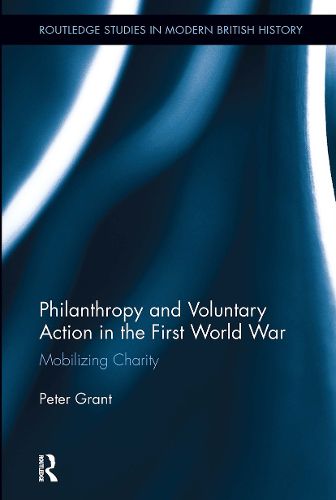Readings Newsletter
Become a Readings Member to make your shopping experience even easier.
Sign in or sign up for free!
You’re not far away from qualifying for FREE standard shipping within Australia
You’ve qualified for FREE standard shipping within Australia
The cart is loading…






This book challenges scholarship which presents charity and voluntary activity during World War I as marking a downturn from the high point of the late Victorian period. Charitable donations rose to an all-time peak, and the scope and nature of charitable work shifted decisively. Far more working class activists, especially women, became involved, although there were significant differences between the suburban south and industrial north of England and Scotland. The book also corrects the idea that charitably-minded civilians' efforts alienated the men at the front, in contrast to the degree of negativity that surrounds much previous work on voluntary action in this period. Far from there being an unbridgeable gap in understanding or empathy between soldiers and civilians, the links were strong, and charitable contributions were enormously important in maintaining troop morale. This bond significantly contributed to the development and maintenance of social capital in Britain, which, in turn, strongly supported the war effort. This work draws on previously unused primary sources, notably those regarding the developing role of the UK's Director General of Voluntary Organizations and the regulatory legislation of the period.
$9.00 standard shipping within Australia
FREE standard shipping within Australia for orders over $100.00
Express & International shipping calculated at checkout
This book challenges scholarship which presents charity and voluntary activity during World War I as marking a downturn from the high point of the late Victorian period. Charitable donations rose to an all-time peak, and the scope and nature of charitable work shifted decisively. Far more working class activists, especially women, became involved, although there were significant differences between the suburban south and industrial north of England and Scotland. The book also corrects the idea that charitably-minded civilians' efforts alienated the men at the front, in contrast to the degree of negativity that surrounds much previous work on voluntary action in this period. Far from there being an unbridgeable gap in understanding or empathy between soldiers and civilians, the links were strong, and charitable contributions were enormously important in maintaining troop morale. This bond significantly contributed to the development and maintenance of social capital in Britain, which, in turn, strongly supported the war effort. This work draws on previously unused primary sources, notably those regarding the developing role of the UK's Director General of Voluntary Organizations and the regulatory legislation of the period.